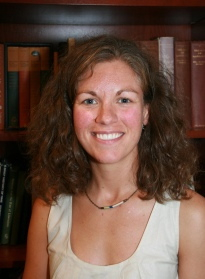
The Last Class
At the end of the term, I like to do three things: wrap up the class, ask students to take an informal course evaluation, and eat cookies. (These are the best ginger spice cookies on the planet. You’re welcome.)
In terms of their organization, my classes are Magic School Bus meets Choose Your Own Adventure. Needless to say, students can find the ride a bit disorienting. (Former student— now editor of Religious Studies News—Sarah Levine writes about her experience of an early version of this course here.) Once I realized students were leaving the course feeling rather lost, I started wrapping up the semester in the last class meeting. I reserve a portion of the final class meeting to review the work we have done, and I preface my presentation by saying that my reflection on the course is necessarily individual. In practice, I find that reviewing the semester together gives students a sense of order.
Admittedly, wrapping up the class isn’t just for the students. Even though I planned the course’s arc months in advance, I wasn’t sure how it had played out. Taking a few hours to go back through the syllabus and key readings gave me an opportunity to begin assessing the course.
 This term I created a Sway presentation that connected multiple themes from “Between Animals and Gods.” (You might remember that my students have the option to create their final reflections in Sway, and so my presentation modeled a version of what I have asked them to do.) As I advanced the Sway storyline, I described the texts we’d read, recounted conversations we’d shared, and reminded students of the questions we’d pursued.
This term I created a Sway presentation that connected multiple themes from “Between Animals and Gods.” (You might remember that my students have the option to create their final reflections in Sway, and so my presentation modeled a version of what I have asked them to do.) As I advanced the Sway storyline, I described the texts we’d read, recounted conversations we’d shared, and reminded students of the questions we’d pursued.
I started with the theme for the day: machines. We had listened to a RadioLab episode called “Talking to Machines” and read Marc Beckoff’s “Wild Justice, Social Cognition, Fairness, and Morality: A Deep Appreciation for the Subjective Lives of Animals” from A Communion of Subjects: Animals in Religion, Science and Ethics. I started wrapping up by reminding them that what we’d studied so far prepared us to ask (and tentatively answer) questions like, “Is the dividing line between animals (human or non-human) and machines just another binary?” “Will machines eventually be animals?” and “Will Artificially Intelligent humans (re)create gods?” Then I took them back to Day One.
I flew through foundational texts and ideas: Wendy Doniger’s idea that human communities use animals and gods to define themselves; Elizabeth Kolbert’s Sixth Extinction and the urgency of reconciling ideas of who we are and who they—the animals—are; Jakob von Uexküll’s idea of umwelt from Carol Kaesuk Yoon’s Naming Nature, and so on. I reminded them why we started with snakes, and that they met some at ZooAtlanta. I touched on folk biology, natural history, and animal studies. I offered Aaron Gross’s contention in The Question of the Animal and Religion that “Religion begins where the animal ends” (78) as a critique of Doniger’s observation. Finally, I highlighted our work on gods in Mesoamerica and Hinduism in relation to Eduardo Vivieros de Castro’s “perspectivism.” All that in a 25 minute whirlwind.
The presentation concluded with a clip from RadioLab that prompted small group discussions and then a class conversation about animals, gods, and machines. The conversation they had was one of the best of the semester: almost everyone participated and they asked important questions grounded in the readings. I couldn’t have asked for a better last class.
At the start of this post, I said I do three things at the end of each course, and I’ve written about only one. My students completed informal evaluations in class yesterday, but I haven’t had time to read through all of them. More on evaluations in my next post!
Until then, what are your end-of-term rituals? How do you spend the final day of class? If you use informal evaluations, what questions do you ask? I look forward to hearing from you, and do treat yourself to some cookies.
This is the 10th post in this series by Molly Bassett this semester (Fall 2015).